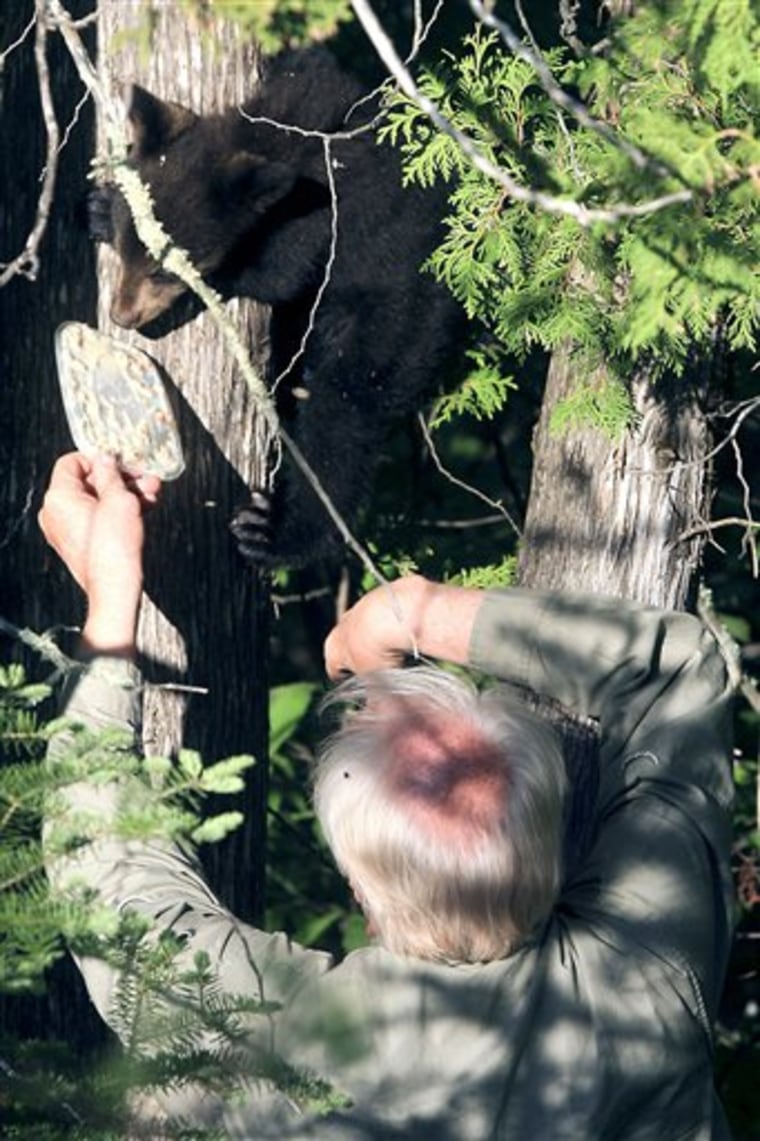Researchers fear a hunter killed a black bear named Hope that became famous when her birth in northeastern Minnesota was broadcast live to a worldwide audience over the Internet.
Lynn Rogers, senior biologist with the North American Bear Center and its affiliated Wildlife Research Institute, said Monday that Hope was last seen Sept. 14.
Rogers is waiting to hear from the Department of Natural Resources whether a hunter registered killing a bear matching the description of Hope. He said the local game warden told him he'd need to seek clearance from other DNR officials to release the information.
The center installed a camera inside Lily's den and thousands of people watched over the Internet as Hope's mother, Lily, give birth two winters ago.
Hope did not have a radio collar but often roamed with Lily, whose collar showed she visited the hunter's bait station three times — on Sept. 15, 16 and 17. "Then she left and never returned to it. And Hope was never seen again," Rogers said.
Lily's Facebook page has over 132,000 fans and word of Hope's potential demise has generated hundreds of postings on it, mostly from mourners and opponents of hunting. People in 132 countries and students at over 500 schools have been following the lives of Lily, Hope, and Lily's youngest cub Faith, Rogers said. He said two teachers called him in tears over the weekend, asking what they should tell their students.
"There was so much we wanted to learn from this family," Rogers said.
Rogers said he knows the hunter who maintained the bait station, and knows he would not shoot a radio-collared bear, which is legal but officially discouraged in Minnesota. He said the hunter answered some questions via email but did not say if he shot Hope.
"I'm figuring I'll never release his name," Rogers said, adding that the center's goal is to "peacefully coexist with hunters. ... We just want to know what happened and go on from there."
Still, Rogers said he has to wonder if the hunter deliberately sought out Hope. He said the hunter has posted messages before on a Facebook page with around 50 fans called "Lily: a bear with a bounty," where some postings last week spoke of "Hope jerky" or Hope cooked in a crockpot.
"It's disappointing to see people without a care about science, education and the region," Rogers said.
Hope and Lily's territory is far away from a forest fire that has blackened over 146 square miles east of Ely, but Rogers said the same drought conditions that fueled the fire also dried up this year's wild berry crop, making hungry bears more likely to feed at bait stations. But he expressed doubt that Hope's contacts with him and other researchers made the bear too trusting. He said hunters tell him the center's research bears are actually more cautious about bait, though he doesn't know why.
Minnesota's bear hunting season opened Sept. 1. Bait stations are legal but must be registered. An estimated 9,200 hunters took a total of 2,699 bears last year for a success rate of 29 percent, according to DNR figures. The DNR is mandated to provide bear hunting opportunities and reducing bear-human conflicts is one reason, DNR spokesman Scott Pengelly said.
The researchers continue blogging about Lily and Faith at bearstudy.org.
